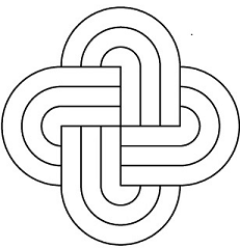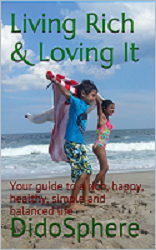Do not act on any information in this blog without talking to your doctor.
If a doctor goes by my family health history it would be easy for him to conclude that I only have a short life to live. My paternal grandfather and ALL my paternal granduncles died of either heart disease, heart attacks or strokes. Many of them died in their forties and fifties. My paternal grandmother and most of my paternal grand aunts died of diabetes also at a relatively young age, in their fifties and early sixties. My father’s side of the family was always plagued with elevated triglyceride, high cholesterol levels and hypertension. My mother’s side of the family was plagued with asthma, emphysema and chronic pulmonary diseases. None of my grandparents, grand uncles and grand aunts died of old age.
Because of my family history and also due to my ignorance, in my first 30 years of life my diet consisted of low fat, low protein and high carbohydrates. For breakfast I ate bread, pancakes, donuts, muffins, cereals, waffles, bagels and cakes. I avoided eggs (because they have high cholesterol content), bacon, sausages, butter, cheese, ham and steaks. For lunch I loaded up on pasta, bread, rice, French fries and all types of starches you can imagine. My dinner consisted mostly of different types of starches and vegetables with very little meat (because they are high on cholesterol). My annual check-up just a few days shy of my 30th birthday revealed that I had hypoglycemia and my doctor recommended that I change my diet. I must have misunderstood him because the way I changed my diet was to add on more meat to my diet without easing off on my sugar and starch intake. The result was disastrous. I gradually gained weight and the result of my blood test a year later confirmed that whatever I was doing was not working. I had elevated cholesterol and triglyceride levels, my glucose was high and my blood pressure was consistently 170/90. It was only then that it became clear to me that my doctor’s advice was for me to reduce carbohydrate intake—not necessarily to increase protein. It was extremely difficult to heed my doctor’s advice. I am the type of person who can consume a 1.5 quart container of Breyers vanilla ice cream in one sitting. Oftentimes I even added vodka or brandy to it. But just the same, chances are if I opened a 1.5 quart container, it did not make it back to the freezer.
My day of reckoning came when I went to San Francisco, California for a 2 day conference. My flight was scheduled to depart at 3pm from Newark airport. I worked for a tour operator so I often travelled first class for free. I planned to forgo lunch to take full advantage of the perks, the in-flight first class meal and free adult beverages. I had a big corn muffin at my desk about 8 that morning and around 10am, someone brought out a big cake on the occasion of an office mate’s birthday so I took a big piece of the cake. I was hungry when I got to the airport at 2pm but I said to myself I could bear it for another half hour until boarding time. I don’t know how it is now since I have not been in first class for quite some time but back then, the airline crew pampered first class passengers and served them alcoholic drinks as soon as they were seated. We had priority boarding and by the time the last passenger boarded, I had already consumed 2 glasses of champagne. Before the plane moved I finished three more drinks, 3 shots of Chivas and gobbled up an assortment of appetizers. When the plane started moving, the flight attendants cleaned up and folded back our tray tables. As the plane was taking off, I felt a little nauseous and could not wait until the “fasten your seat belt sign” was turned off. I had a window seat and the seat next to mine was empty so I was able to quickly get up and run towards the lavatory. The next thing I remember I am lying down the aisle and I am hearing a woman’s voice on the PA announcing “if there is a doctor on the plane please come over…” I soon realized I passed out on my way to the lavatory. A stewardess has loosened my belt, unbuttoned my pants and held me down when I tried to get up, saying “stay on your back sir, the doctor is coming”. Soon the doctor was examining me while I was lying on the floor and asking me questions. “Do you have any medical conditions? Why do you think you passed out?” I calmly replied, “I have hypoglycemia and I think I had too much to drink with too little to eat”. “You should take a return flight as soon as this plane lands. You need a full examination”, he concluded. The stewardess helped me up and got me back to me seat. “Do you have pain in your chest?” she asked, pointing to her own chest. “No, why? And where are my glasses?” I replied with a puzzled look on my face. “They’re in your shirt pocket, you took a nasty fall”. I took my eye glasses out of my pocket. They were bent out of shape and I had to twist them back into shape so I could wear them. I felt better two hours into the flight after eating the first class meal the airline served. I refrained from any alcoholic drinks and only ordered diet coke, tea and coffee. I started feeling soreness in my chest area so I went to the lavatory to check it out. When I unbuttoned my shirt I noticed a 2 inch by 2 inch welt in the middle of my chest. I also noticed a bruise on my forehead just above my right eye. The locations of the injuries led me to conclude that when I lost consciousness, I must have fallen forward, bumped my forehead on the back of an empty seat then my chest hit the armrest. I learned two important lessons from this eye opening experience. First, when you become unconscious you will feel no pain. There must be something in our brain that disconnects the pain receptors. A protective mechanism that protects us from pain. Second, I was not healthy.
So when I got back home, I immediately called my PCP and related my experience on the plane. He ordered different types of tests for me which were done over the course of 2 months. These included, blood work, electrocardiogram, nuclear stress test and glucose tolerance test. He concluded I was pre-diabetic, I had hypertension and elevated cholesterol. So, at the age of 32, my doctor put me on Lipitor to lower my cholesterol and a beta blocker for hypertension. And he threatened to put me on diabetes medication if I fail to shape up. To make a long story short, I struggled for 7 years, gradually gaining weight, experiencing palpitations, extreme fatigue, drowsiness at around 3pm, insomnia and sleep apnea. I am only 5’8” and weighed almost 200 Lbs. If I walked only a few blocks or climbed the stairs I had trouble catching my breath. My life changed when my son who was then in high school asked me, “Dad, why don’t you walk around the yard instead of spending the entire day in front of the television?” The rhetorical question hit me like a lightning bolt. The next day, I walked around the yard for 15 minutes just to show my son that his dad is not a lazy bum. Then each day, though I struggled, I picked myself up and walked a few more steps until I started jogging, then running a mile then 2 miles a day. I got my old bike repaired and started riding it for long periods on weekends, sometimes for 3 hours. Although I lost 10 pounds quickly due to the physical activity, I was not able to take control of my diet until I accidentally came across a book entitled “Protein Power” by Drs. Michael and Mary Eades. Two statements (paraphrased) in the book became etched in my mind, “The body does not need carbohydrates…” and, “…fats in the absence of carbohydrates are good…” Since I secretly love fats anyway, I resolved to give the diet a try. I followed the high protein diet by eating 2 eggs and bacon for breakfast, broccoli and fried chicken or a burger with no bun for lunch and chicken, fish, pork chop or steak and leafy green vegetables for dinner. After 15 days on this “protein power diet”, what a surprise! I lost 15 pounds! The best part is that my blood work taken 1 month after I started this diet showed my cholesterol, triglycerides and glucose all went down close to normal levels. My blood pressure was consistently much lower than normal for 3 months so my doctor took me off the hypertension medication. I continued taking only the Lipitor.
That was 15 years ago. I have an occasional craving for sweets and starches and on those occasions, I make an exception and still consume a 1.5 quart container of Breyers vanilla ice cream in one sitting just to get it out of my system. But generally, I remained faithful to the diet and only consume less than 35 grams of carbohydrates a day. I feel much stronger today, physically and mentally than 20 years ago. My weight is down to 165. I kept up with walking, jogging and running at least half an hour every day. In fact, I stopped taking Lipitor 2 years ago but did not tell my doctor. Thank God my blood test readings are still all normal even without taking any regular medications. My doctor keeps telling me, “Continue doing whatever you’re doing….”, so I continue eating eggs, bacon and steaks. I have so much energy that I now go to the gym thrice a week for strengthening and conditioning.
In summary, I eat a low carb diet, exercise at least half an hour each day, I almost always drink 2 glasses of wine with dinner, I drink at least 8 glasses of water every day, I usually get 7 to 8 hours of sleep and I go out of my way to avoid any type of stress. Stress can cause anxiety and depression and can weaken the immune system. When I’m feeling stressed out and I feel that my mind is in turmoil, I do the following:
- While sitting in front of my desk, I put my elbows on my desk, my hands on my face, empty my mind so I am thinking of nothing, which is similar to what others may refer to as meditation, hold my breath, try to tense all the muscles in my body from head to toe, then exhale. I repeat the process 3 or 4 times.
- Then I push my chair back, grasp the front of my desk and do 15 squats, as shown on the picture below. I do at least 3 sets of this exercise during the day. Squat exercises offer many types of benefits. Click on this link to find out more: http://www.beautyandtips.com/sports-and-fitness/10-benefits-of-squats-and-why-every-girl-should-try-doing-squat-exercises/
If I am home, I do plank exercises or push-ups and sit-ups, doing as many repetitions as I can. Life is good. Why not make it even better in retirement!

